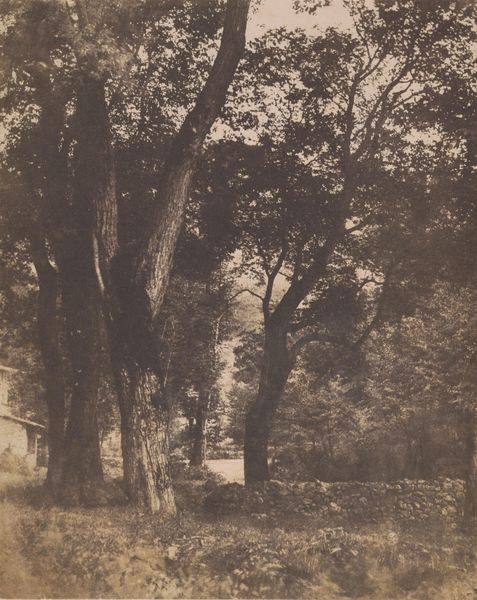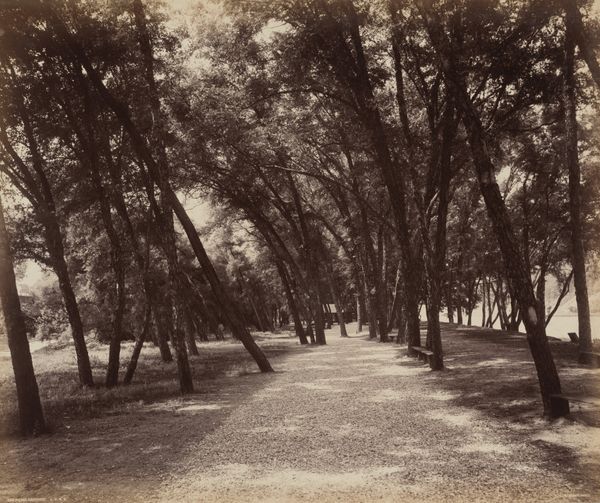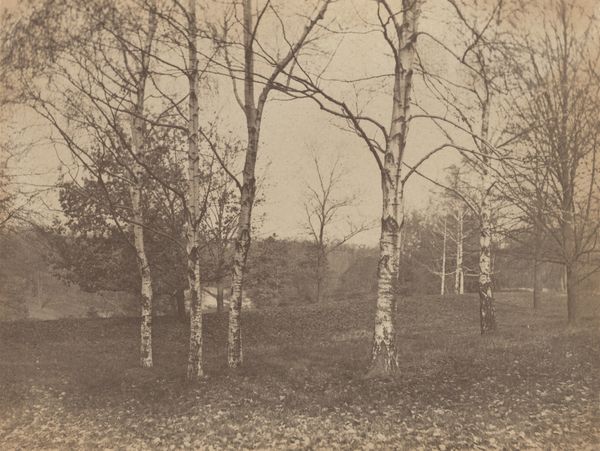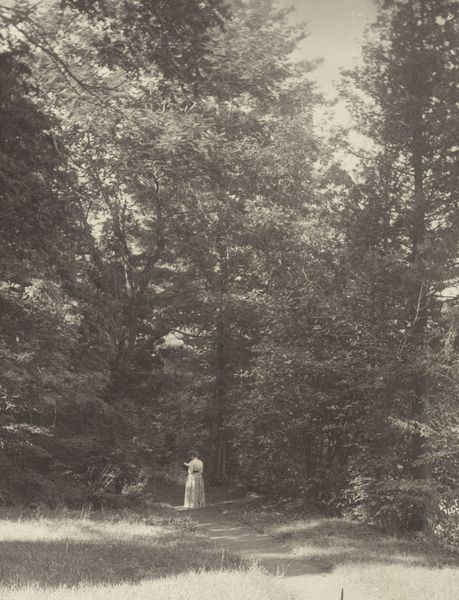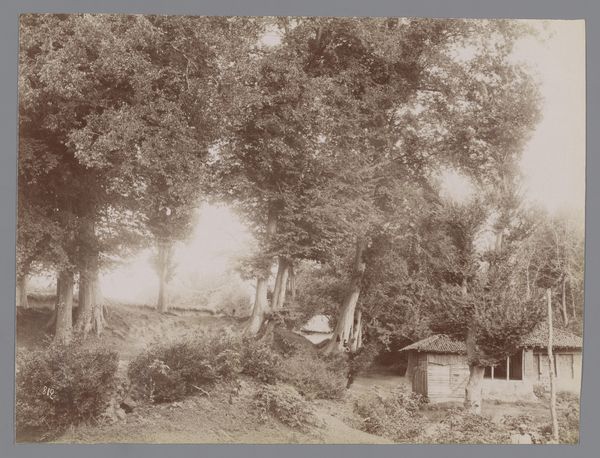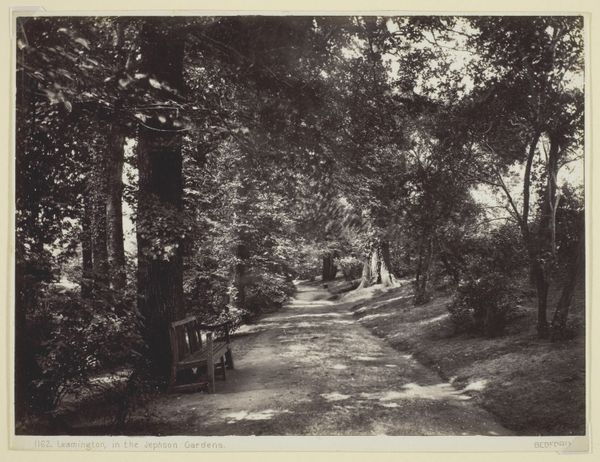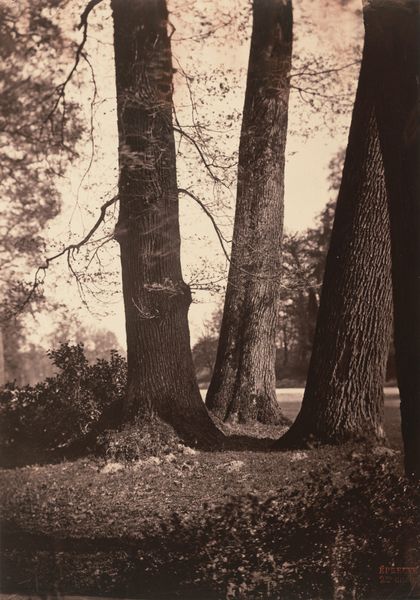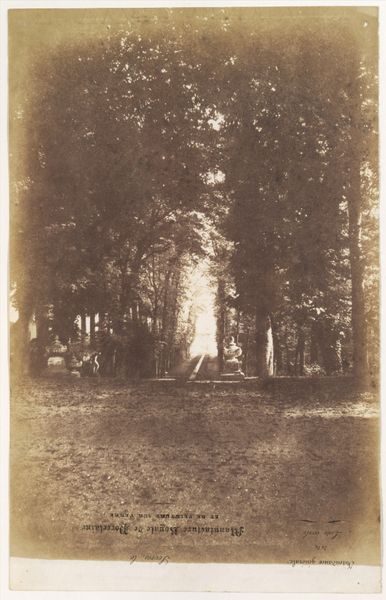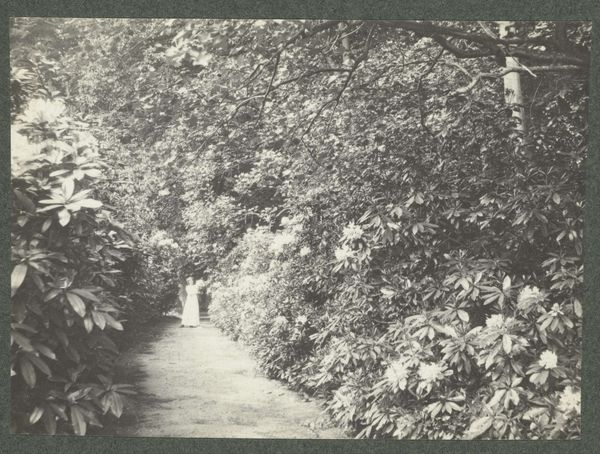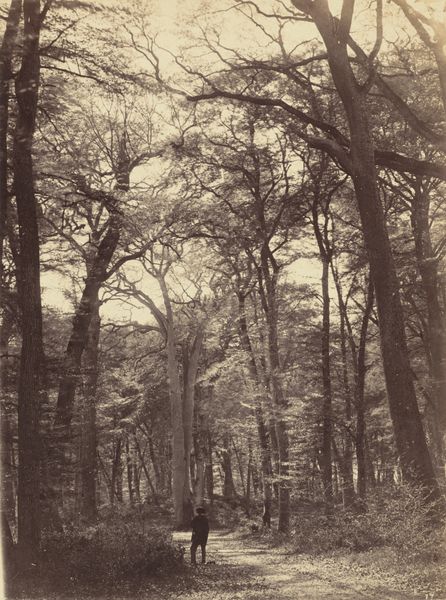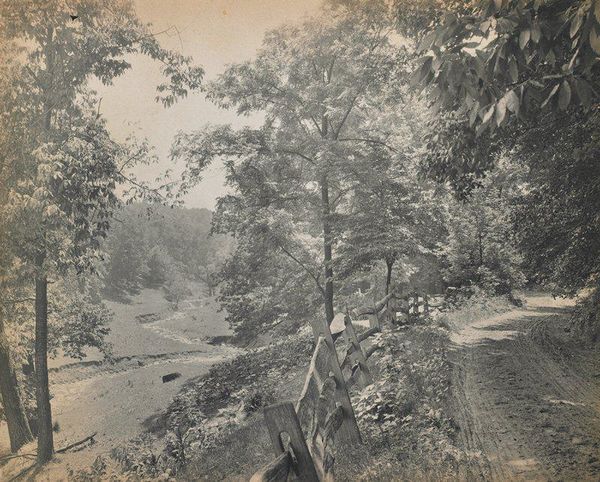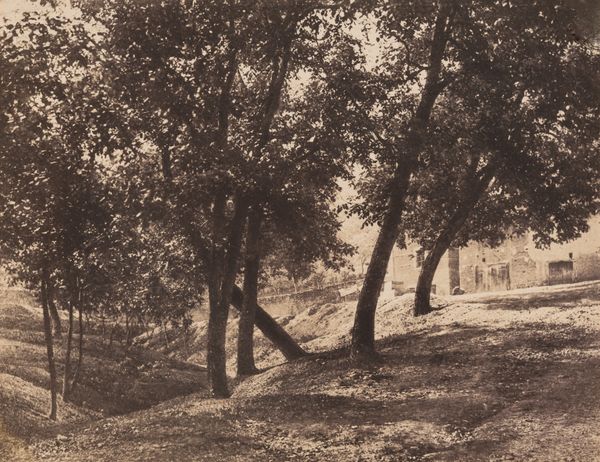
#
solitude
#
natural shape and form
#
countryside
#
organic shape
#
outdoor scenery
#
nature friendly
#
wooden base
#
outdoor activity
#
natural palette
#
shadow overcast
Dimensions: sheet (trimmed to image): 18.9 × 15 cm (7 7/16 × 5 7/8 in.) page size: 34.8 × 27 cm (13 11/16 × 10 5/8 in.)
Copyright: National Gallery of Art: CC0 1.0
Alfred Stieglitz made "Hedwigspath, Oaklawn, Lake George" using a photographic process involving silver and gelatin. The tones and details we see in this photographic print are deeply influenced by the artist's darkroom skills, especially Stieglitz's careful control of light exposure. Photography, invented in the 19th century, democratized image-making, moving it away from the traditional labor-intensive practices of painting and sculpture. But don't be mistaken: it involved immense expertise. Stieglitz, through his own dedicated work, elevated photography from a mere industrial process to a fine art. The print's materiality evokes a certain moodiness, perhaps reflecting the social dynamics of leisure and landscape at the turn of the century. Stieglitz presents an unidealized view of nature, a landscape marked by paths, where the presence of people subtly hints at labor, property, and consumption. Considering the historical context and the artist's hand in the darkroom, we begin to understand Stieglitz's work not just as a photograph, but as a crafted object that invites questions about the relationship between art, labor, and social class.
Comments
No comments
Be the first to comment and join the conversation on the ultimate creative platform.
